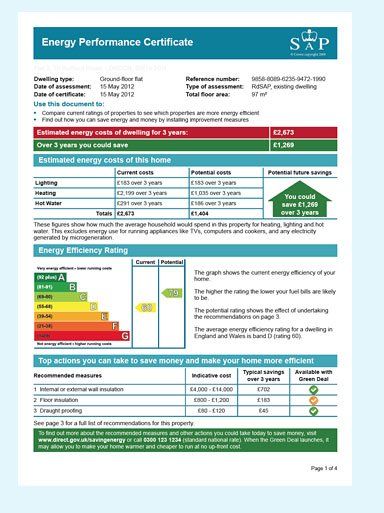The Energy Performance Certificate (EPC) (see my blog post What Is An Energy Performance Certificate) looks generally similar to the energy labels provided on various household appliances. Its purpose is to show the energy efficiency of a house. The EPC will give an energy efficiency rating from A to G, with A is the maximum efficient and G is the minimum efficient. The better the rating, the more energy efficient the building is, and the lower the fuel bills are likely to be.
Every energy efficiency rating is based on the characteristics of the house itself and things like heating, ventilation and lighting. This type of rating is known as an asset rating. The asset rating will show the age and condition of the house. The EPC shows recommendations to aid owners and inhabitants to improve the energy efficiency of a house. The recommendations include cost effective enhancements while further enhancements (that achieve higher values but are not essentially cost effective). For each recommendation the indicative cost, typical cost savings and the performance rating after improvement are listed. The possible rating shown on the EPC is based on all cost effective recommendations being applied.
The Energy Performance Certificate will assess the energy efficiency of services which are present in the house. It will not remark on the safety aspects or upkeep of the services nor will the assessment confirm that the installed system is fit for purpose.

